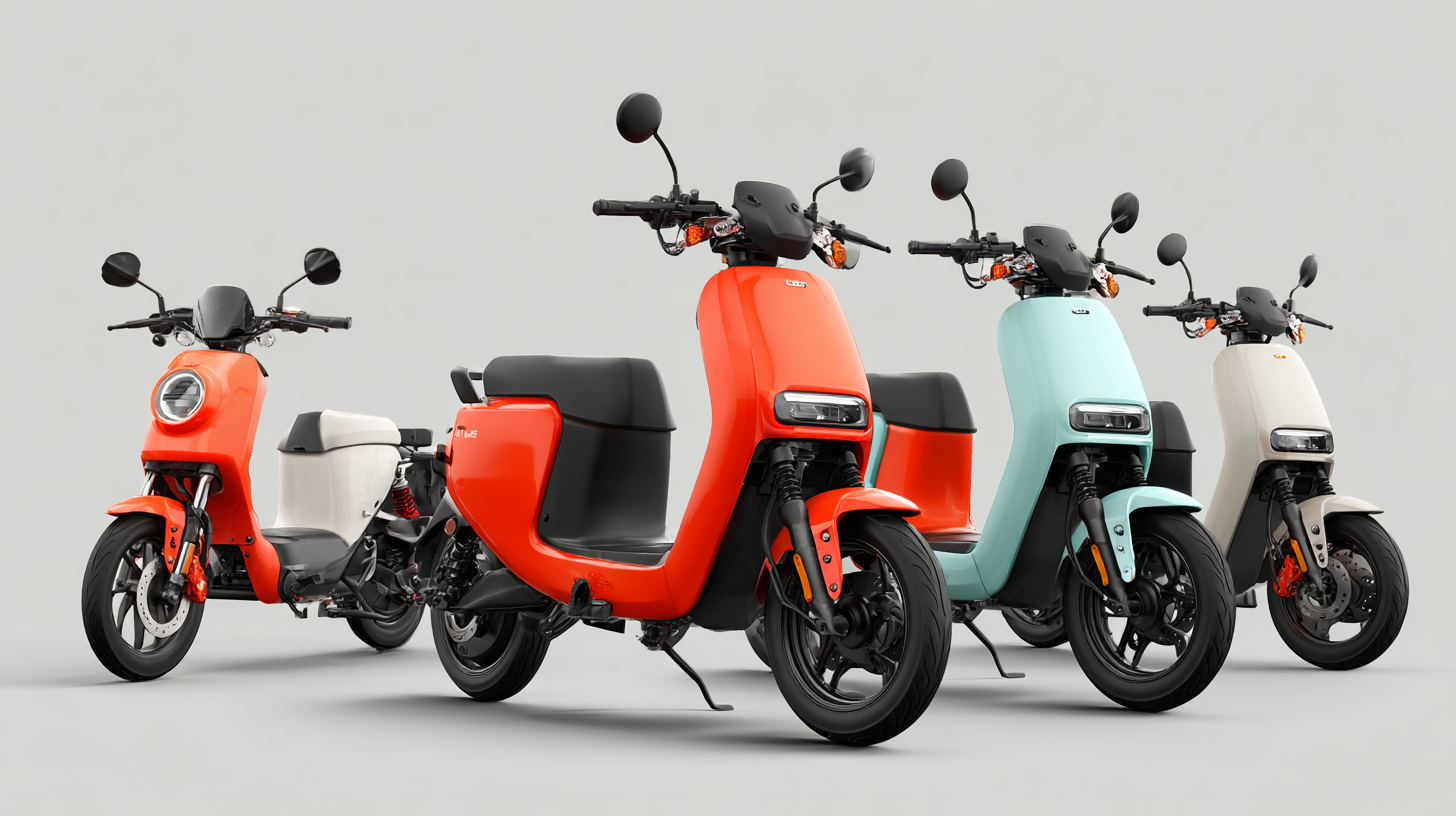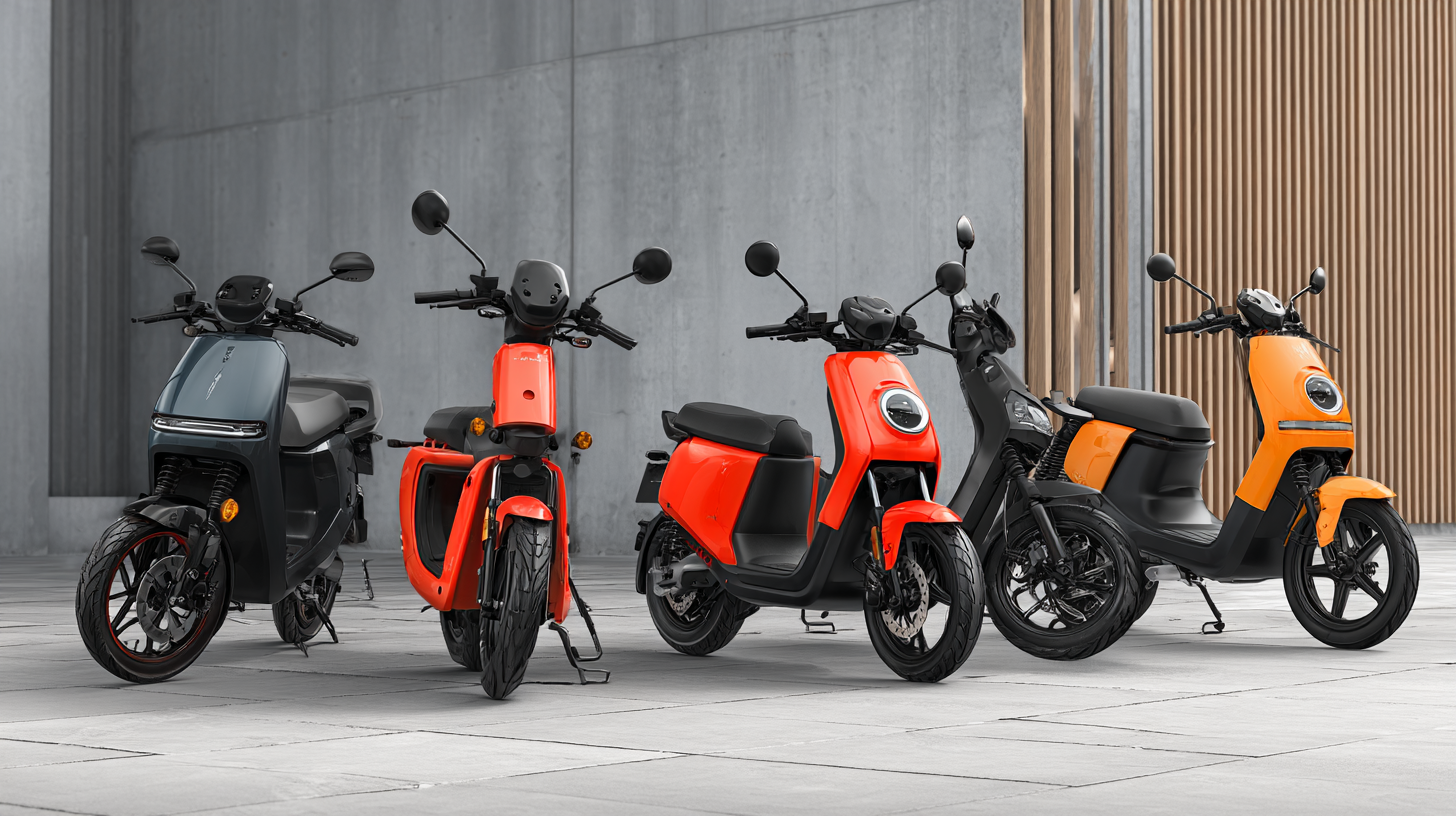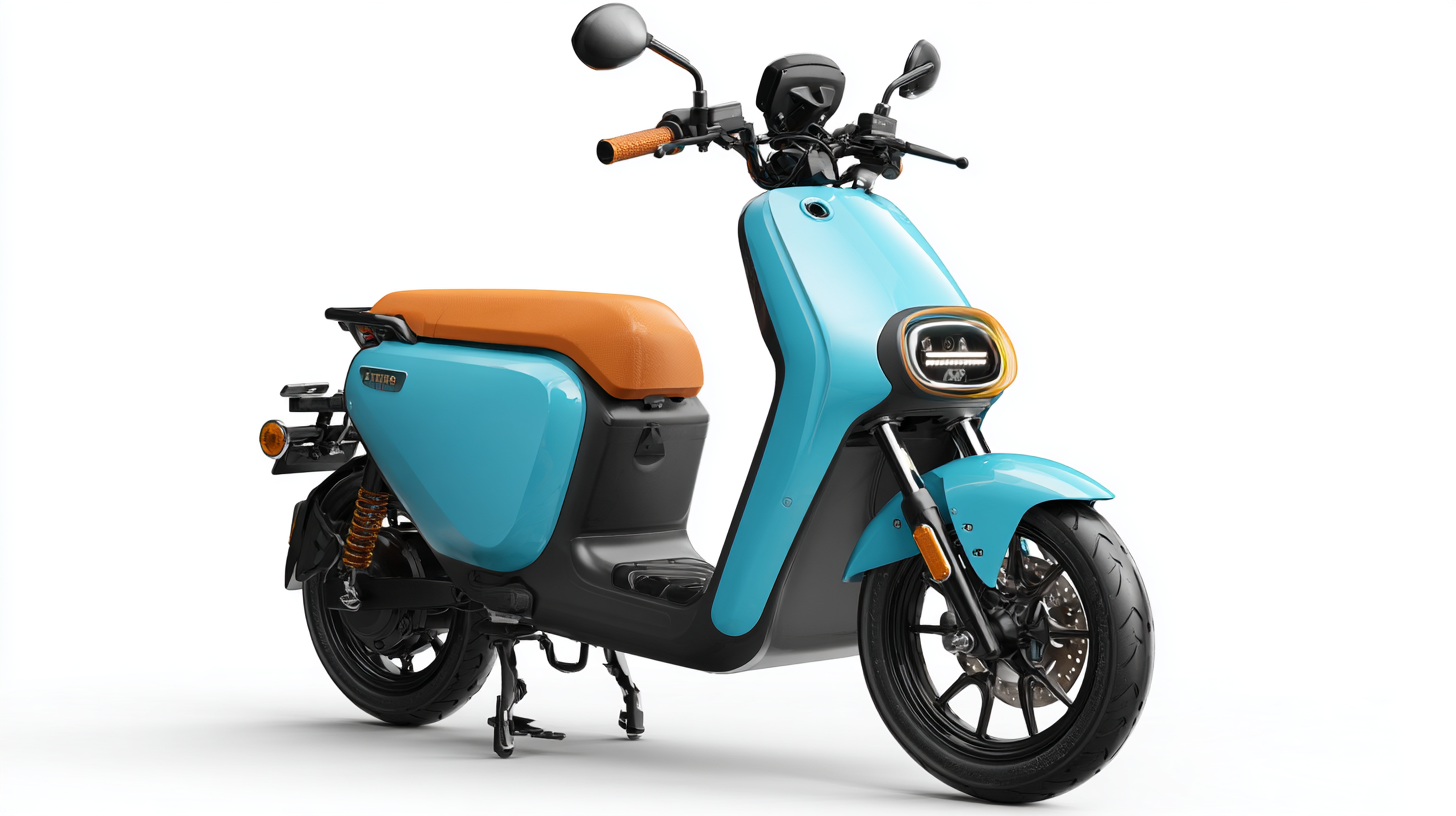As the world shifts toward sustainable transportation solutions, the popularity of the Electric Moped Scooter has surged, presenting a compelling alternative to traditional gas-powered scooters. According to a recent report by MarketsandMarkets, the global electric scooter market is projected to reach $41.98 billion by 2026, growing at a CAGR of 7.96% during the forecast period. This growth is driven by the increasing need for eco-friendly commuting options and the rising urban population. Electric moped scooters not only help reduce carbon emissions but also offer cost-effective mobility solutions for city dwellers. In this comparative analysis, we will explore the top five electric moped scooters available today, examining their applications across various industries and highlighting their unique features, advantages, and capabilities for savvy global buyers.

As we look towards 2025, the electric moped scooter market is undergoing significant transformations influenced by technological advancements, sustainability efforts, and changing consumer preferences. One of the most prominent trends is the focus on eco-friendliness. With increasing awareness of climate change, manufacturers are prioritizing the production of electric scooters that minimize carbon footprints while offering efficient transportation solutions. This shift not only meets regulatory demands but resonates with environmentally conscious consumers seeking guilt-free commuting options.
 When considering the purchase of an electric moped scooter, savvy buyers should keep several tips in mind. Firstly, assess the battery life and range, as these factors greatly determine the practicality of the scooter for daily use. A longer range can alleviate concerns about recharging frequently. Secondly, evaluate the scooter's weight and design, ensuring comfort and maneuverability, especially in urban settings. Lastly, look into the availability of service and spare parts in your local area, as reliability and ease of maintenance are crucial for long-term ownership.
When considering the purchase of an electric moped scooter, savvy buyers should keep several tips in mind. Firstly, assess the battery life and range, as these factors greatly determine the practicality of the scooter for daily use. A longer range can alleviate concerns about recharging frequently. Secondly, evaluate the scooter's weight and design, ensuring comfort and maneuverability, especially in urban settings. Lastly, look into the availability of service and spare parts in your local area, as reliability and ease of maintenance are crucial for long-term ownership.
Another key trend is the emergence of smart technology integration in electric mopeds, enhancing user experience with features like GPS navigation, anti-theft systems, and connectivity with mobile devices. This tech-savvy direction appeals to younger consumers who seek not only functionality but also enhanced features that align with their digital lifestyle. When purchasing, consider models that offer these smart features; they could provide additional value and convenience in your daily rides.
When considering an electric moped scooter, several key features distinguish the best models from the rest. Firstly, the battery capacity is crucial; higher capacity translates to longer ranges and fewer charging interruptions. According to a market analysis by Statista, the electric scooter segment is expected to grow significantly, with many high-performing models offering ranges of up to 60 miles on a single charge. This capability is essential for urban commuters who rely on their scooters for daily transportation.
In addition to battery life, the scooter's motor power is vital for performance. A motor with at least 500W is recommended for smooth acceleration and adequate speeds, particularly in hilly terrains. A report from Research and Markets indicates that scooters with optimized motor systems not only enhance user experience but also contribute to higher sales growth, as buyers prioritize speed and reliability. Furthermore, features like regenerative braking and lightweight materials can tremendously affect both efficiency and maneuverability, offering additional benefits for savvy buyers making informed decisions in an expanding market.

When selecting an electric moped, understanding the performance and design of leading brands is crucial. According to a report by MarketsandMarkets, the electric scooter market is projected to reach $24.2 billion by 2025, driven by the growing demand for eco-friendly transportation solutions. Key players such as Vespa and NIU have emerged as favorites due to their innovative designs and robust performance metrics. For instance, the NIU NGT model boasts a top speed of 70 km/h and a range of up to 70 km on a single charge, making it a preferred choice for urban commuters.
In terms of design, sleek and ergonomic structures significantly enhance user experience. The Vespa Elettrica not only combines iconic styling with modern technology, but it also features a regenerative braking system that helps extend battery life. A survey by Statista revealed that 67% of electric scooter owners prioritize aesthetics and comfort over other factors.
**Tip:** When evaluating electric mopeds, consider the balance between performance metrics and design elements. Look for models that allow for customization, as personal touches can make your riding experience unique. Additionally, check for user reviews to gain insight into real-world performance.
Electric mopeds represent a transformative shift in urban mobility, especially with the integration of advanced technologies that enhance both safety and efficiency. Modern electric mopeds are equipped with features such as regenerative braking systems, real-time diagnostic tools, and integrated GPS navigation. These innovations not only provide a smoother ride but also contribute to a safer driving experience by allowing riders to gather data about their vehicle's performance and location.
In addition, smart connectivity options, such as mobile applications, further augment safety and efficiency. Riders can access information on battery life, find nearby charging stations, and even receive alerts about potential maintenance issues. This proactive approach not only extends the lifespan of the vehicle but also ensures that riders can navigate urban environments with confidence. As technology continues to evolve, the future of electric mopeds promises even greater advancements in safety features, including anti-lock braking systems, collision avoidance sensors, and improved lighting for visibility. Such progress not only caters to a growing market of eco-conscious consumers but also sets a new standard for sustainable urban transportation.
As we look ahead to 2025, the demand for electric moped scooters continues to rise, with buyers increasingly seeking value and affordability alongside performance and functionality. A thorough price comparison among the top models reveals significant variations based on features such as range, battery capacity, and additional technologies. For instance, while premium brands may charge upwards of $3,000 for high-performance models, there are compelling options under $2,000 that still offer commendable quality and reliability. Buyers must weigh the upfront costs against long-term savings on fuel and maintenance, making an informed choice more crucial than ever.
When evaluating the value proposition of electric mopeds, global buyers should also consider local incentives for eco-friendly transportation. Many governments are offering tax breaks, rebates, or even subsidies that can drastically reduce the total cost of ownership. Moreover, features like advanced safety systems and smart connectivity are becoming standard, enhancing the overall value of these scooters. By focusing on both price and the convenience of ownership, savvy consumers can make strategic decisions that align with their budget and lifestyle, ensuring their investment in an electric moped scooter pays off well into the future.
